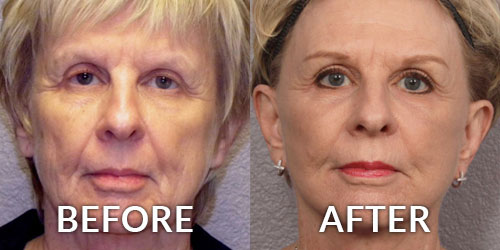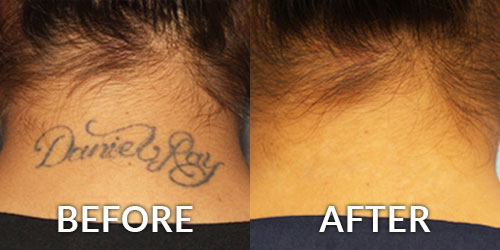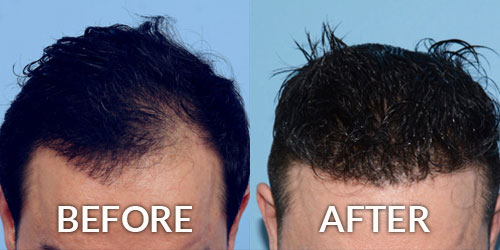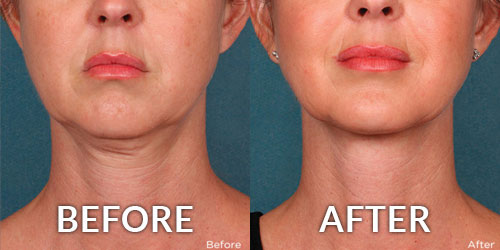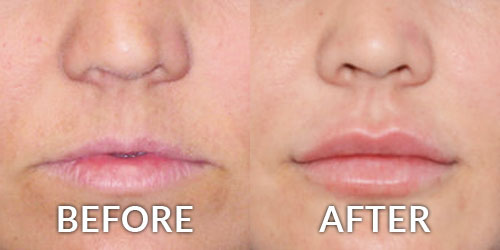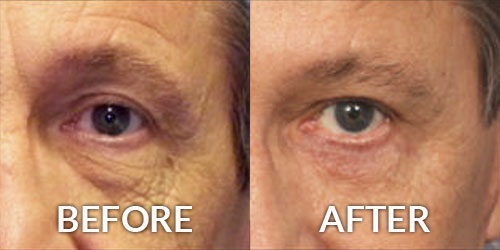Scar Revision
Consultations offered at our two convenient locations in Phoenix and Scottsdale
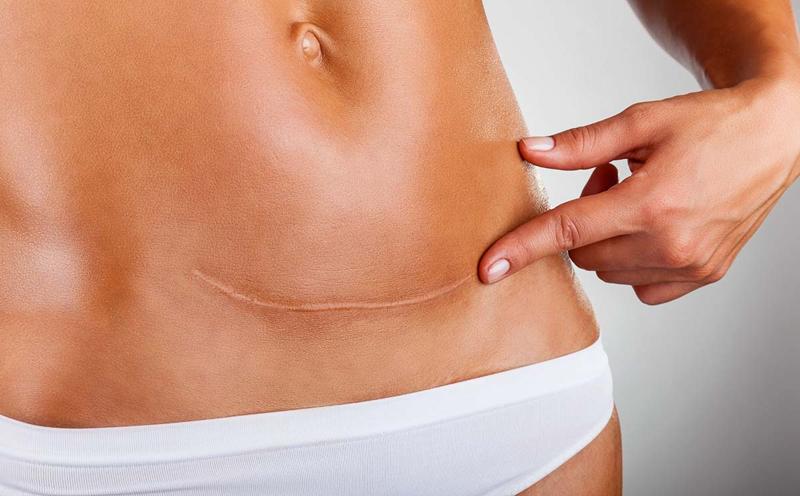
Scar revision is a type of procedure that improves the appearance of scars, resulting in clearer, smoother, and revitalized skin. Scars are areas of skin that have been wounded and replaced by fibrous tissue, unlike the surrounding skin. Scar tissue looks different from normal skin due to its distinct fibrous composition; some scars contain collagen fibers arranged in a parallel fashion rather than the perpendicular arrangement found in healthy skin. Some have more elastin protein than undamaged skin. (1) Scars are also less resistant to ultraviolet radiation, and sweat glands and hair follicles do not grow back within scar tissue.
The appearance of a scar can be a constant visual reminder of an unpleasant experience. Phoenix Skin has several options available to improve the appearance of the scar. Our Dermatology practices are led by board-certified physicians and physician’s assistants with specialized training in skin care, working to ensure that every patient gets the treatment needed that promotes long-term skin health.
If you are interested in learning more about procedures to reduce the appearance of scarring, please call (480) 473-9111 (Scottsdale) or (602) 222-9111 (Phoenix) to schedule your consultation at Phoenix Skin today. Alternatively, you can reach out by inquiring through our online contact form, and a member of our staff will assist you promptly.
Contents
Types of Scars
Most wounds after an accident, disease, or surgery will result in some degree of scarring. As with the wide array of scar causes, the shape, color, size, and appearance of a scar will also vary.
Contracture Scars
A contracture scar gives the skin a tightened appearance and in severe cases, can impair your mobility. This type of scar may even penetrate deeper and affect the functioning of muscles and nerves. Contracture scars most often occur as the result of a burn or surgery in which the incision line experiences more tension.
Atrophic Scars
Often associated with acne, chickenpox, or skin infections, atrophic scars take the form of a sunken recess in the skin that has a pitted appearance. These indentations are the result of the loss of underlying structural support from deeper layers of the dermis.
Hypertrophic Scars
Hypertrophic scars take the form of a red lump on the skin as a result of your body overproducing collagen. A deep, straight cut can produce a thickened, raised line where the injury occurred. Still, any type of injury can cause this type of scar, and they most often develop in areas where there is most skin tension, such as the back, arms, and chest. These also most commonly develop in people with darker skin. (2)
Keloids
A keloid is an excessively large scar that forms at the site of wounds or trauma, including body piercings, vaccinations, acne, accidents, or surgical trauma. Unlike a hypertrophic scar, keloid collagen formation extends beyond the boundaries of the original injury. They may form on any part of the body but are most common on the upper chest and shoulders. Keloids are a more serious form of scarring because they have the potential to grow larger. Keloids can be itchy, painful, and uncomfortable. Sun exposure can cause keloid scars to darken more than the surrounding skin.
Scar Treatments
Laser Skin Resurfacing
Laser skin resurfacing works by administering micro-injuries to the skin. The skin then responds by increasing healthy skin regeneration and rearrangement of connective protein fibers, slowly fading the scar. Phoenix Skin uses Lumenis UltraPulse CO2 laser, a versatile laser with 4 settings for both cosmetic skin rejuvenation and scar revision:
- ActiveFX eliminates fine lines and mild, superficial discolorations.
- DeepFX treats wrinkles and certain acne scars.
- TotalFX combines the superficial and deep capabilities of both ActiveFx and DeepFX
- ScarFX targets the entire dermis layer, treating deep lesions
Lumenis laser continues collagen reformation for up to 6 months post-treatment.
Nonablative Laser Therapies
Non-CO2 laser therapy, such as Clear + Brilliant and the PicoSure Focus are non-ablative devices, meaning that they only target the dermis layer of the skin without harming the epidermis. After a treatment session with one of these lasers, you can expect faster healing times with no skin peeling or need for downtime. They usually require multiple sessions for a significant reduction in redness and improvement in skin texture.
Chemical Peels
Chemical peels remove the epidermis, leading to exfoliation and the alleviation of certain skin conditions. A chemical peel is most effective for superficial acne scars. Your Phoenix Skin specialist can prescribe a light, medium, or deep peel to address your specific needs at different depths.
Surgery
Scar removal by surgical procedure may be possible in some cases. The procedure involves carefully cutting the scar tissue out and closing the wound in a manner that makes it less likely to scar. Sometimes, for more serious burn scars, skin grafts are required.
Dermal Fillers
Your skincare specialist can apply Juvéderm or Restylane to atrophic scars to temporarily lift the tissue and reduce their sunken appearance. These fillers contain hyaluronic acid (HA), a hydrating gel-like substance that binds to water and increases in volume. (3) The injection of HA also provokes the dermis to produce more elastin- responsible for skin elasticity- and collagen for skin rigidity. Depending on the Juvéderm or Restylane formulation of your choice, the location of the filler, and your own metabolism, it will maintain results anywhere from 6 months to 2 years. Not only can these fillers smooth our atrophic scars, but they have the added benefits of face contouring and anti-aging effects.
Microneedling
The collagen P.I.N.® is an FDA-cleared microneedling device designed to transform skin tissue through use of an advanced 36-PIN needle system – delivering unmatched control and more favorable treatment results for microneedling practitioners and patients alike.
This advanced system delivers micro-injuries to skin – promoting the body’s natural healing response and revealing visible transformation to the treated area. Over time, microneedling treatment sessions can induce more collagen production and revascularize scar tissue. Since there is no thermal aspect to the procedure, there is no risk of developing unwanted hyperpigmentation or hypopigmentation. Studies have shown that 4 sessions of standard microneedling (spaced 1 month apart from each other) increased collagen protein production by 400%. (4)
Personal Consultation

At Phoenix Skin Medical, Surgical, and Cosmetic Dermatology, we ensure our skin care specialists provide personal consultations with their patients. At your appointment, your specialist will evaluate the type/s of scars you have, their location, and how long you’ve had them. They will discuss your expectations for scar revision, estimate how many sessions you will require for each treatment method, and speak with you about how you can maximize your results to the fullest.
To speak with one of our highly experienced skin care specialists call our Phoenix office at (602) 222-9111 or our Scottsdale location at (480) 473-9111, and a staff member will schedule your consultation at the earliest convenience. Alternatively, you can inquire online, and we will get back to you as soon as possible.
Candidates for Scar Revision
Depending on your needs, preferences, and health limitations, there is a scar revision treatment that is right for you. Our Phoenix Skin specialists will ensure you get the best results possible while keeping negative side effects to a minimum. Keep these factors in mind before choosing a treatment:
- Those who have an active skin condition such as eczema, psoriasis, or acne in the treatment area should treat their primary condition first.
- Patients who have experienced a cold sore or another type of viral outbreak in the treatment area should take antiviral medication to prevent a future outbreak.
- Pregnant women should avoid all types of skin resurfacing due to the small possibility of infection and undesired or unpredictable skin changes due to hormonal fluctuations.
- Those with darker skin should avoid deep chemical peels due to their higher likelihood of experiencing hyperpigmentation.
- Scar revision techniques are most effective on scars that are at least 18 months old. This is roughly the amount of time it takes for the skin to fully heal after an injury or surgery.
Cost of Scar Revision in Phoenix
The cost of your scar revision will depend on the treatment method, the number of appointments required, and the extent of your scarring. During your initial meeting with your Phoenix Skin provider, they will give you a total cost estimate. For patients who are interested in making affordable payments to cover the cost of their treatment/s, we offer CareCredit, a reputable financing option.
If you are ready to transform your confidence with the remarkable results that scar revision can offer you, call our location in Scottsdale at (480) 473-9111 or Phoenix at (602) 222-9111. You may also fill out our online form, and let us know when is the best time for your consultation. To find out more about other available procedures, please visit our blog.
FAQ
Which ingredients do chemical peels have?
Chemical peels have varying amounts of trichloroacetic acid, glycolic acid, salicylic acid, retinol, vitamins, and antioxidants. Usually, superficial peels have lower concentrations of certain ingredients to make it a lighter treatment that requires less downtime.
Is microneedling painful?
Before any microneedling procedure, your skincare technician will apply topical anesthesia to make the process comfortable. The microneedles of the SkinPen can be customized to penetrate 0.5 to 3 mm within the skin. At most, the needles will cause some pin-point bleeding.
How long does it take to recover from an ablative CO2 laser treatment?
After a CO2 laser treatment, you should expect to experience mild swelling, scabbing, and redness for about 2 weeks. Although the downtime is longer when compared to non-ablative laser therapies, it requires fewer treatment sessions.
References
- Marshall CD, Hu MS, Leavitt T, Barnes LA, Lorenz HP, Longaker MT. Cutaneous Scarring: Basic Science, Current Treatments, and Future Directions. Advances in Wound Care. 2018;7(2):29-45. doi:https://doi.org/10.1089/wound.2016.0696
- Schmieder SJ, Ferrer-Bruker SJ. Hypertrophic Scarring. PubMed. Published 2020. https://www.ncbi.nlm.nih.gov/books/NBK470176/
- Wongprasert P, Dreiss CA, Murray G. Evaluating hyaluronic acid dermal fillers: A critique of current characterization methods. Dermatologic Therapy. 2022;35(6). doi:https://doi.org/10.1111/dth.15453
- Yadav S, Singh A. Microneedling: Advances and widening horizons. Indian Dermatology Online Journal. 2016;7(4):244. doi:https://doi.org/10.4103/2229-5178.185468


